
Fabtech 2022 highlights demand for manufacturing trades
by Madalene Arias

While the metal fabrication industry has found ways to mitigate the labour shortage through automation and robotics, experts at this year's Fabtech show say professional welders and machinists will always have a place on plant floors.

Fabtech 2022, Toronto Congress Centre. Photo credit: Madalene Arias.
Over 200 companies in metal fabrication, welding, laser-cutting and metal forming from Canada and around the world mounted their exhibits on the floors of the Toronto Congress Centre for the annual Fabtech show, hosted from June 14 to June 16.
Fabtech says this year’s exhibits introduced at least 60 new products to the show.
Exhibits ranged from handheld pieces displayed on tables for attendees to hold, to heavy machinery standing several feet high and wide, demonstrating live operations as some guests watched in awe while others observed with familiarity.
The acute sound of heat searing through metal, sparks and drills echoed from all directions across the 80,000 square foot floors of the venue.
On the second day of Fabtech, Canadian Manufacturing approached some of the exhibitors to learn about their latest developments and gain some insights into metal fabrication trends.
Developments in welding automation, robotics and cloud software continue to expand in the gaps where a shortage of skilled workers in the manufacturing trades have continued to leave metal fabricators in search of solutions.
At the same time, the demand for metallics in a range of industries rages on. The structural steel market alone is projected to be worth USD $162.64 billion by 2030, according to Market Research Future.
Five years ago, while searching for ways to meet the growing demand for steel and mitigate labour shortages, AGT robotics pioneered the Beammaster — a fitting and automation welding system for steel beams.
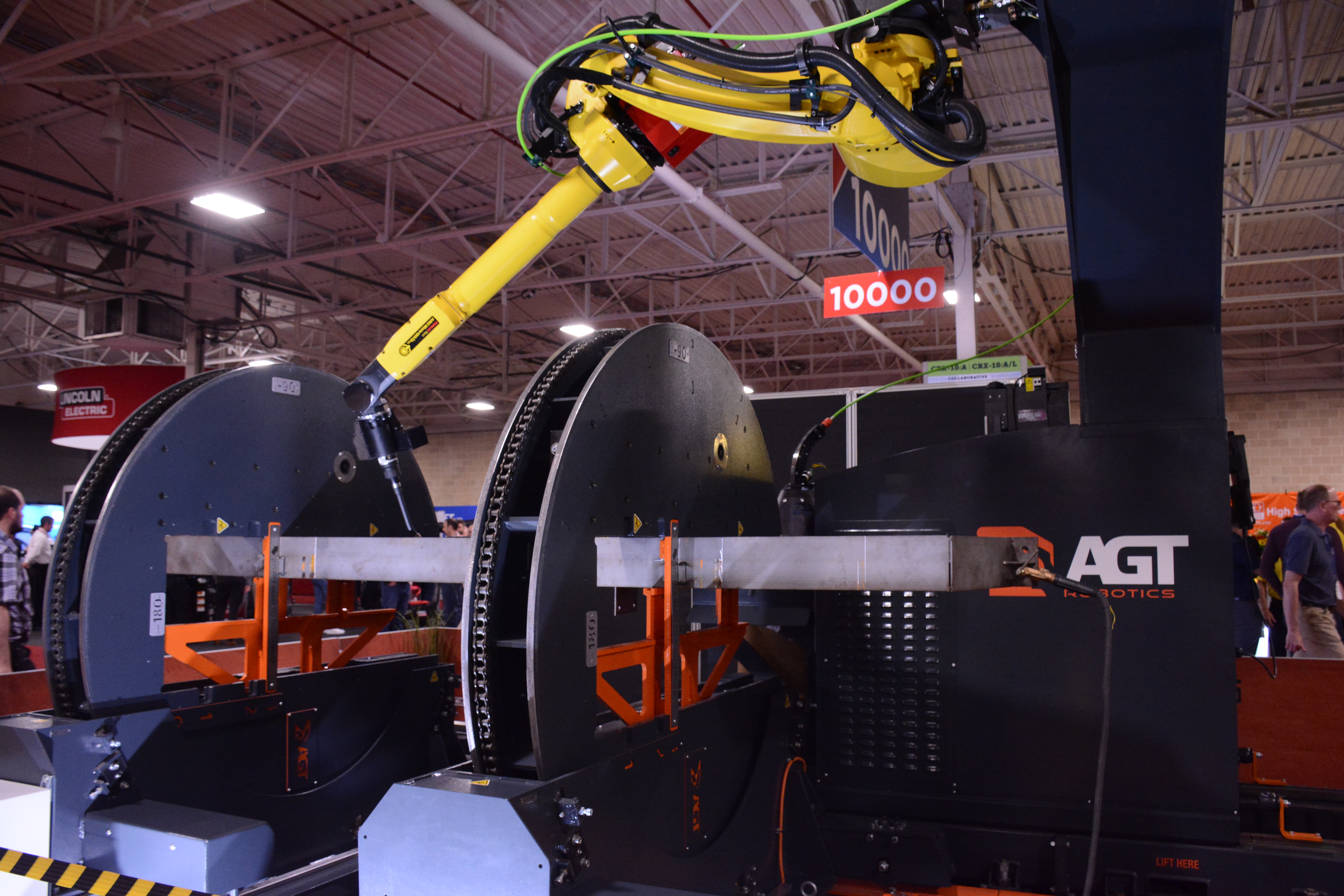
AGT Robotics. Fabtech 2022. Photo Credit: Madalene Arias.
According to Leland Weed, sales and application engineer at AGT Robotics, what was once an eight-hour task for a welder with measuring tape could become a fifteen minute process for anyone comfortable using a tablet or smartphone.
“We tried to keep the younger generation of workers in mind,” he says.
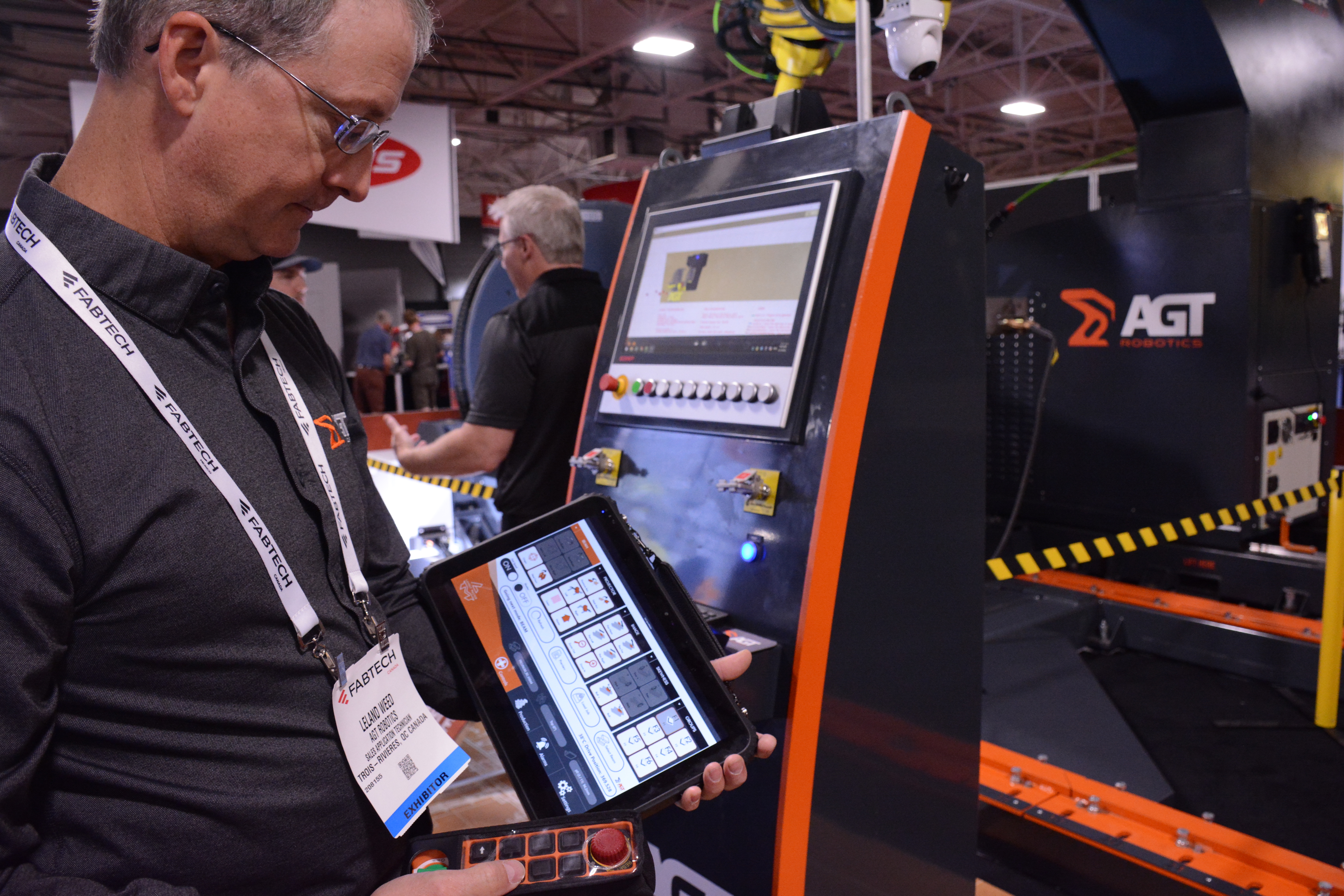
Leland Weed. AGT Robotics. Fabtech 2022. Photo Credit: Madalene Arias.
AGT’s exhibit of the company’s beam welding solution demonstrated two parts. The first is the fitting stage which AGT dubbed LayoutMaster.
The LayoutMaster uses colour laser technology and AGT’s Cortex software to project all of the details needed for precise assembly of parts onto the beam. This process alone can save a full eight-hour work shift according to Weed.
Technicians present at this stage would need to ensure the projected measurements align with the beam. The final stage in this process involves placing the parts in the correct part of the beam for welding.
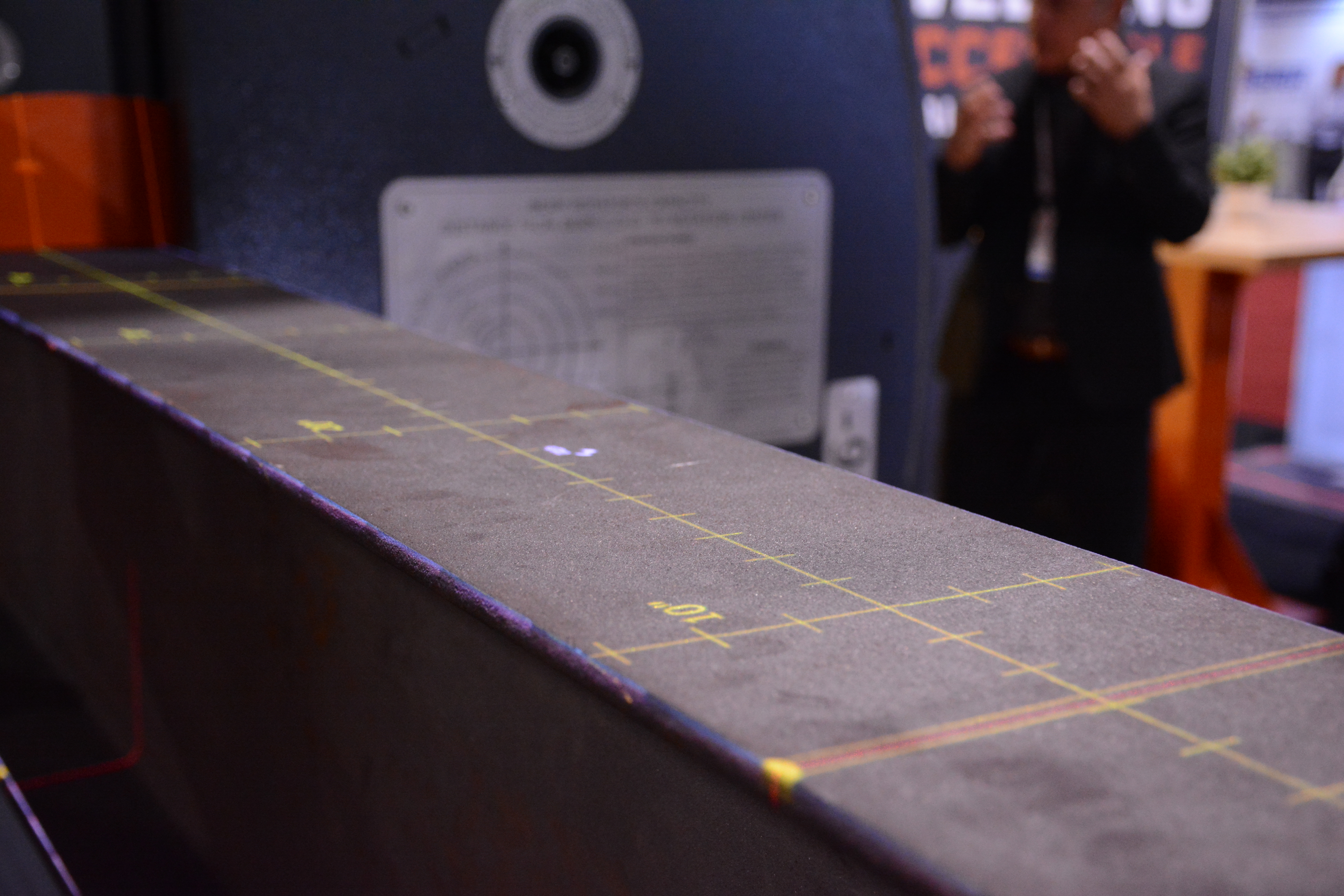
AGT Robotics. Fabtech 2022. Photo Credit: Madalene Arias.
In the second stage, a robotic arm performs a series of welds as per instructions from a program sequence found in Cortex, which would be displayed on a computer interface for technicians to control.
Weed says it is not necessary for operators of these machines to have acquired welding diplomas. At the same time, this does not mean AGT’s method would not benefit from someone with welding skills to operate technologies like LayoutMaster and BeamMaster.
“You’re still dealing with a piece of equipment where something could go wrong. You need to know whether it’s doing a good job,” says Weed. “As a welder, you know what to listen for.”
Defective welds can cost metal fabricators a lot of time and resources to rework, so skilled welders can prevent the large-scale production of incorrect welds through early detection of flawed techniques.
In another corner of the Toronto Congress Centre, guests huddled around Acieta’s display of the FastARC CX1000, a cart-mounted robotic arm designed for technicians to wheel across shop floors and set up at different production lines as needed. Acieta advertises the CX1000 as ideal for low-volume and high-mix shops.
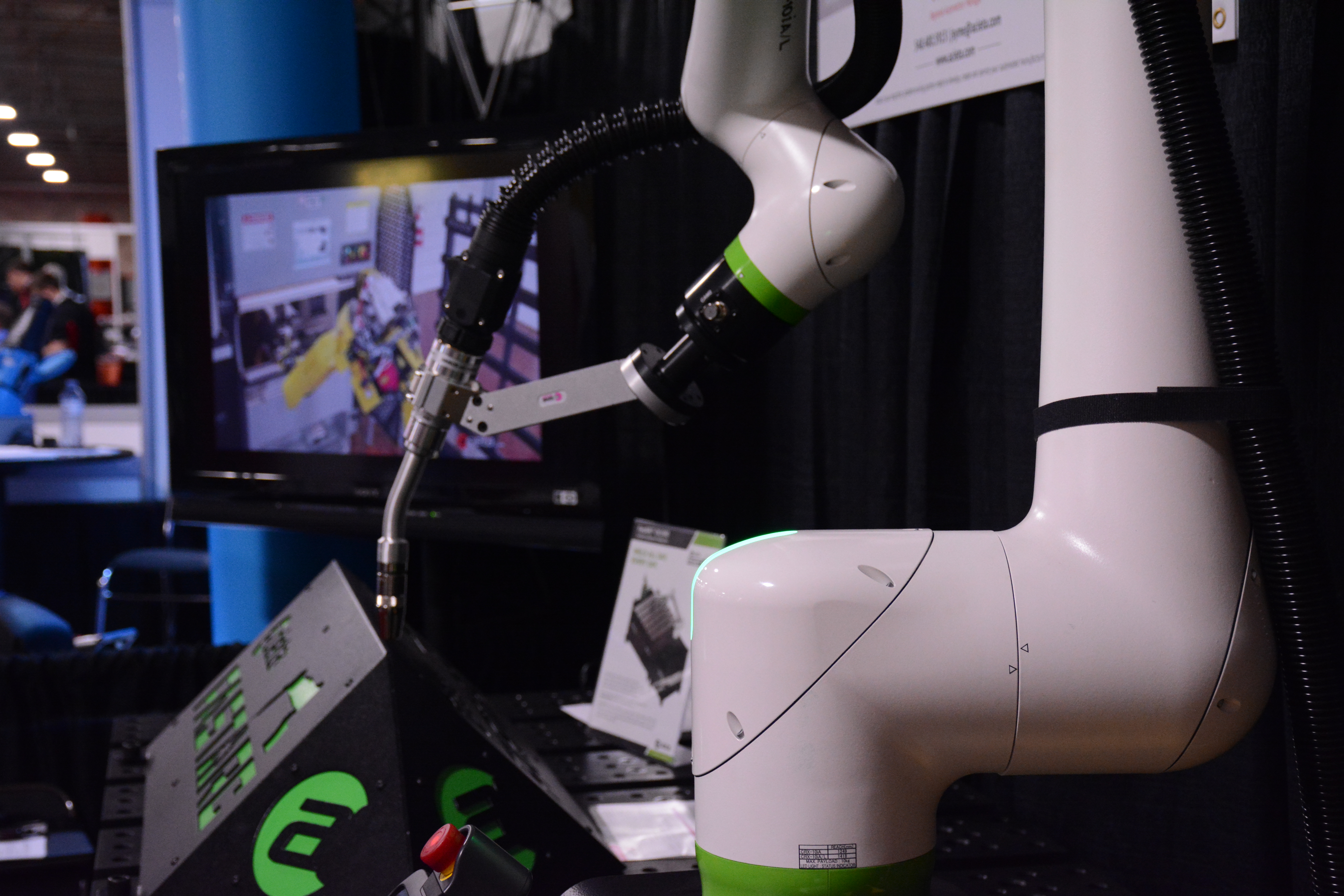
Acieta’s FastARC CX1000. Fabtech 2022. Photo Credit: Madalene Arias.
As with many of the automated robotics technologies displayed at Fabtech 2022, the FastARC CX1000 runs on a software technicians can manipulate over any type of computer device.
Acieta’s regional automation manager, Jim Syme explains that the programming software is designed to be intuitive for the user. It allows technicians to identify different welding actions as symbolized through the icons presented. The program employs a drag and drop style for technicians to create the sequence of their welding programs. Users can then save a series of welds as a single file in the same manner text would be saved in a word document to be retrieved for later use.
Syme explains that the idea behind the the FastARC CX1000 was to create something that could alleviate the time and energy skilled welders put into simple sub welds, leaving them with greater availability for more complex tasks.
“Something more complex is something for which the company can charge higher value — this ultimately allows the manufacturer to drive up its bottom line,” says Syme.
Syme’s career in manufacturing exceeds 30 years. He credits early exposure to trades like auto-mechanics in his high school years for piquing his interest in the field. He laments the loss of many of the manufacturing-related courses he says were once offered in secondary schools across Canada.
The final hall within the Toronto Congress Centre hosted some of the larger displays for precision cutting technologies used to fabricate finer sheets of metal.
AMADA Ltd.’s exhibit covered an entire corner of the hall with a sleek display of two linear fibre laser machines, each approximately covering the average height and square-footage of a bachelor condominium in downtown Toronto.
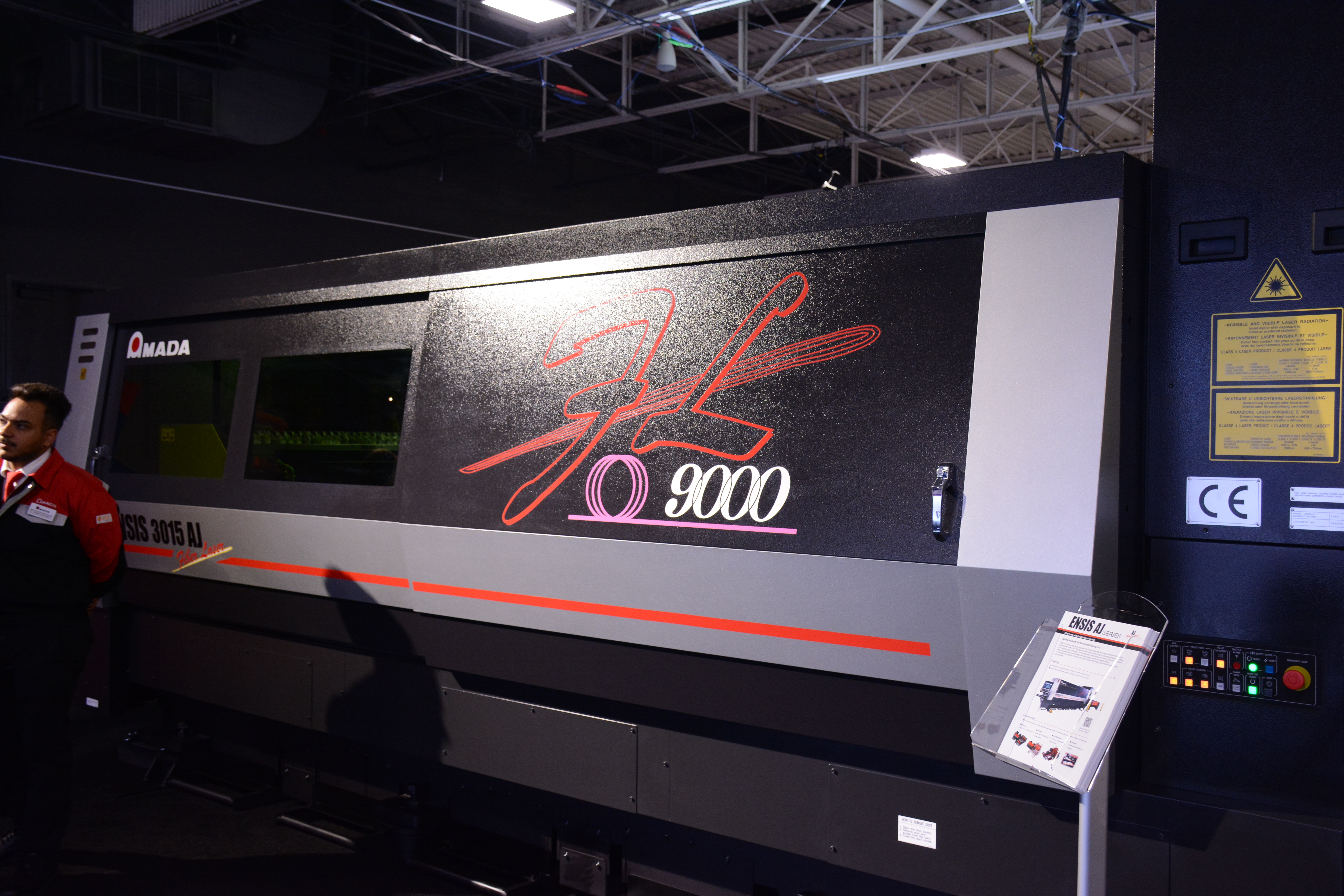
AMADA Ltd. Fabtech 2022. Photo Credit: Madalene Arias.
“This machine is specifically designed for laser metal cutting. This machine can process mild steel, stainless steel, aluminium and exotic materials such as copper, brass, titanium,” says Petr Meloun, technical consultant, engineering and application at AMADA Ltd.
Machines designed for the Canadian market are manufactured in Japan, Meloun explains while standing before the doors of AMADA’s Fibre Laser with Variable Beam Control of the ENSIS AJ Series.

AMADA Ltd. Fabtech 2022. Photo Credit: Madalene Arias.
The lead time for one of these machines to arrive in Canada may take longer than usual; however, the installation of the equipment itself takes about a week’s time Meloun says.
“While service technicians are working on the installation of the machine, we teach customers how to actually create the programs for the machine.”
Meloun is the person end-users turn to for troubleshooting support and for training new staff to operate AMADA’s machines. He has been in the metal fabrication and CNC machining industry for more than 15 years, having launched his career during his high school days in the Czech Republic.
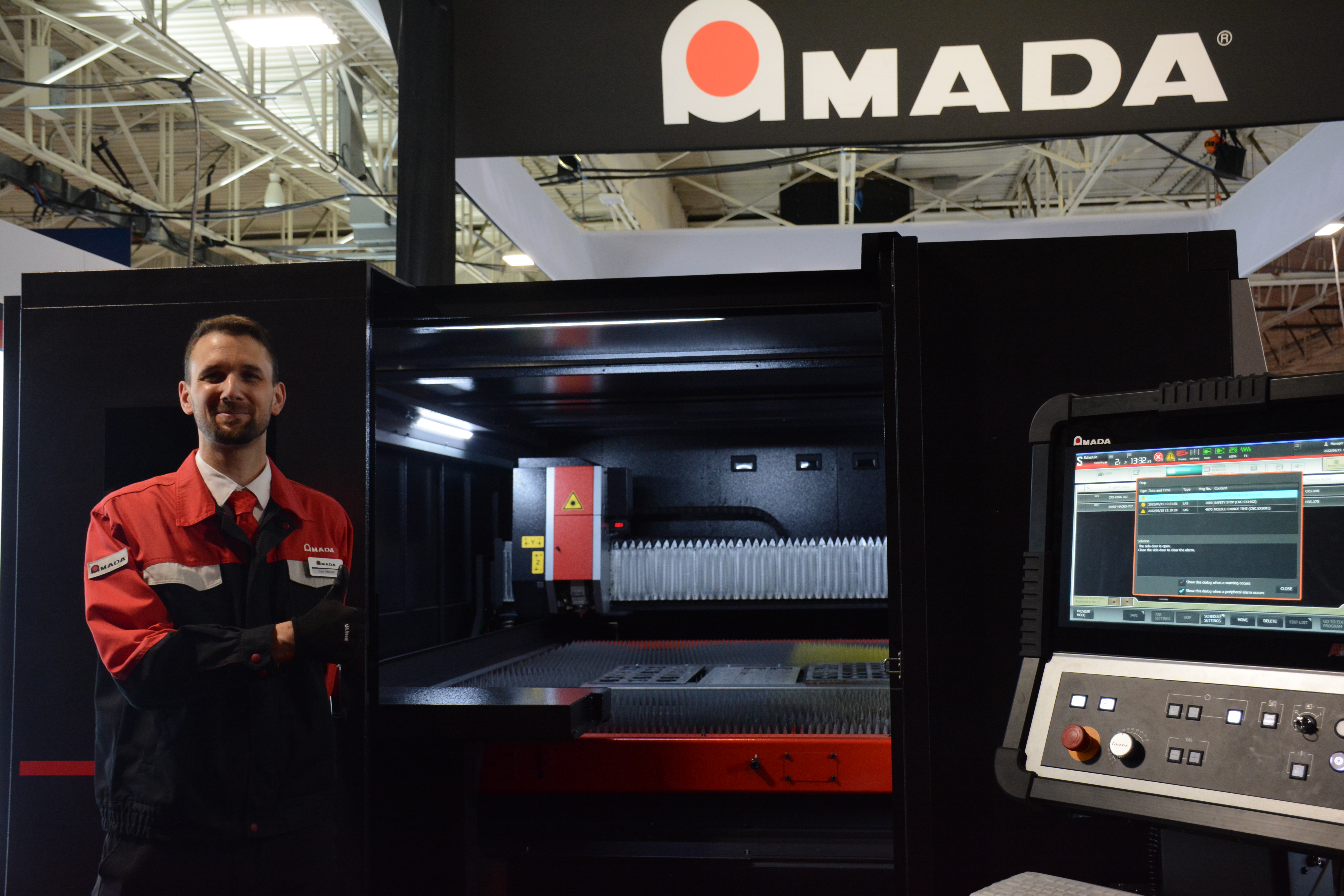
Petr Meloun. AMADA Ltd. Fabtech 2022. Photo Credit: Madalene Arias.
Official reports from Fabtech say AMADA CANADA Ltd. was among the top rated exhibiting companies along with BLM Group, Bystronic Canada, FANUC Canada, Heraeus Noblelight America and KUKA Robotics Canada to name a few others.
Fabtech also says this year’s show garnered an audience of 5,500 people from Ontario and Canada, marking a successful in-person return for the annual event.